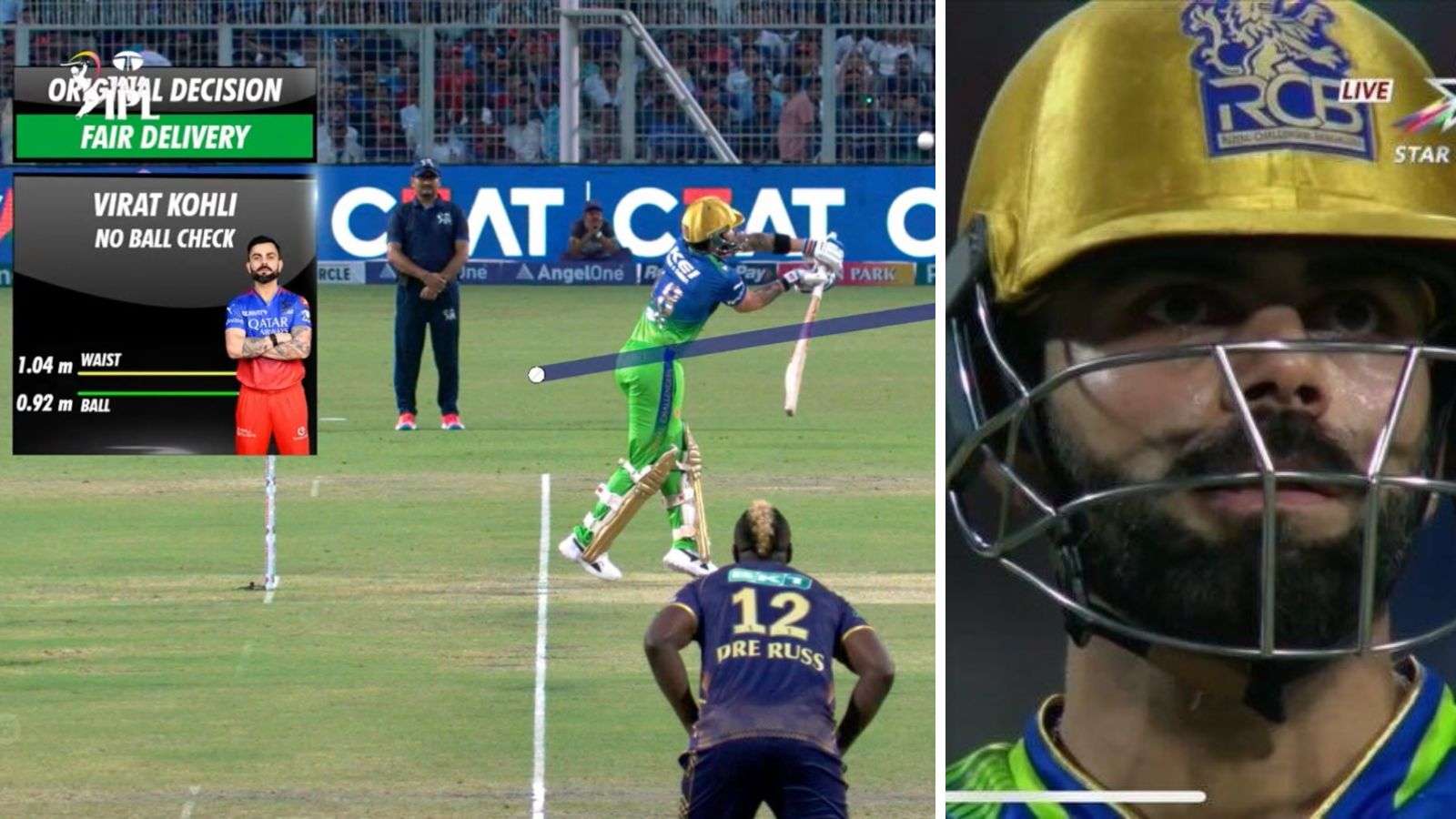
Virat Kohli Dismissal vs KKR In the 36th Match
Virat Kohli Furious Over Controversial Dismissal vs KKR – What ICC Law States
The IPL 36th match between Royal Challengers Bangalore (RCB) and Kolkata Knight Riders (KKR) witnessed a momentous event that left cricket fans worldwide in a frenzy. Virat Kohli, the esteemed captain of RCB, found himself at the center of a controversial decision by the umpire. The dismissal, deemed contentious by Kohli and supporters alike, has sparked a debate about the interpretation of ICC laws governing such scenarios. Let’s delve into the incident that occurred during the Virat Kohli Dismissal vs KKR in the 36th match, Kohli’s reaction, and what the ICC laws actually stipulate regarding similar dismissals.
The Controversial Dismissal:
In the high-stakes encounter between RCB and KKR, Virat Kohli’s dismissal in the 36th match became the focal point of contention. Facing the bowling attack of KKR, Kohli’s bat made contact with the ball, leading to a catch that resulted in his dismissal. However, the decision was met with vehement protests from Kohli, who vehemently contested the umpire’s call. The Virat Kohli Dismissal vs KKR in the 36th match sparked immediate debate and scrutiny, with fans dissecting replays in search of conclusive evidence to support or refute the decision.
Kohli’s Fury:
Virat Kohli’s reaction to his dismissal against KKR in the 36th match was nothing short of explosive. The RCB captain, renowned for his unwavering passion and competitive spirit, was visibly incensed by the umpire’s decision. Kohli vehemently gestured towards the dressing room, signaling his disbelief at being given out. His fury resonated with fans, who rallied behind the cricketing icon in solidarity. Kohli’s animated response underscored the intensity and significance of IPL encounters, where every decision carries immense weight and consequence.

Understanding ICC Law:
To comprehend the legitimacy of Kohli’s grievances, it’s crucial to examine the laws established by the International Cricket Council (ICC). According to ICC regulations governing dismissals, a batsman can be adjudged out caught if there is conclusive evidence that the ball has made contact with the bat or any part of the batsman’s attire before being caught by a fielder or wicketkeeper. However, the final decision rests with the on-field umpire, whose judgment is subject to review by the third umpire through the Decision Review System (DRS) in select formats of the game.
The Importance of Technology:
In the modern era of cricket, technology plays a pivotal role in the adjudication of dismissals. Innovations such as UltraEdge and HotSpot provide additional layers of scrutiny, enabling umpires to make more informed decisions based on empirical evidence. Despite the proliferation of technology, controversies surrounding dismissals persist, highlighting the inherent subjectivity involved in umpiring decisions and the limitations of even the most sophisticated tools.
According to the 3rd umpire, Virat Kohli was outside his crease.
– It’s a fair delivery or a No Ball according to you? pic.twitter.com/GkESFX73Nj
— Mufaddal Vohra (@mufaddal_vohra) April 21, 2024
The Role of Umpires:
Umpires shoulder immense responsibility in the officiating of cricket matches, serving as guardians of fair play and the game’s integrity. While their decisions may sometimes attract criticism, it’s essential to acknowledge the complexity of their task and the human fallibility they contend with. Umpires undergo rigorous training and evaluation to uphold the highest standards of officiating, but occasional errors are an unavoidable aspect of the game.
Conclusion:
The incident involving Virat Kohli’s controversial dismissal against KKR in the 36th match of the IPL underscores the nuanced nature of cricketing decisions and the passion they evoke among players and fans alike. While Kohli’s reaction was understandable given the circumstances, it’s vital to respect the authority of on-field umpires and the mechanisms in place to review their decisions. As the IPL and other cricketing tournaments continue to captivate audiences worldwide, controversies like these contribute to the ongoing dialogue surrounding the sport’s rules and regulations. Ultimately, cricket remains a dynamic spectacle, shaped by its players, officials, and supporters, with each match offering moments of drama, excitement, and controversy.

